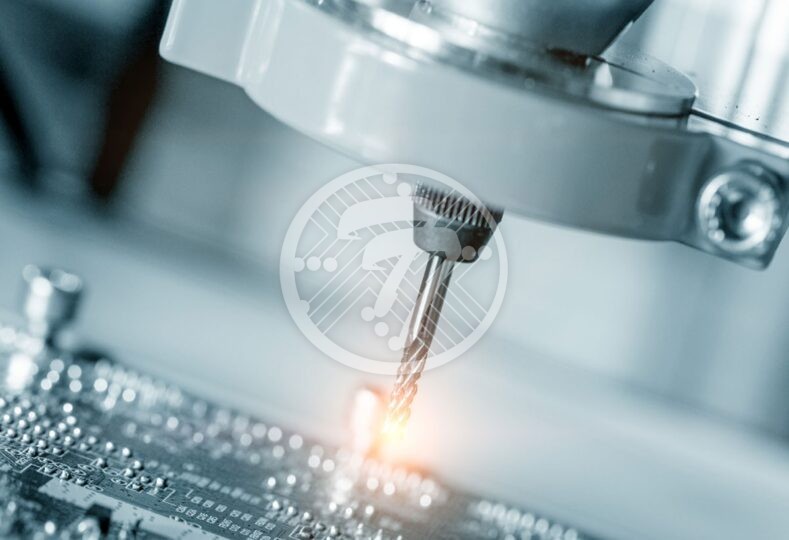Magnitude Of Developments And importance Of Laminates In PCB Fabrication

This present world entails the innovations in high performance electronic equipment that in turn demands for PCB laminates having highly developed properties with improved electrical attributes and better mechanical stability. The PCB laminate manufacturers are now heading to proffer a wide range of high performance laminates. These new versions of circuit board laminates have rich properties that curbs that of the conventional once like Epoxide based FR4 laminates were issues related to flame retardancy of laminates and electronic assembly temperatures are not a challenge anymore. This article is a detailed guide that pinpoints the basics to laminates in the PCB manufacturing process. A short drive to the varied types of laminates, properties of laminates with its importance and new development in laminate technology is what it has tried to highlight.
Well! Before going into brief about the importance of PCB laminates, let’s first have a short drive to the basics of circuit board laminates and more details on what are they? This article will lend you up to the exact understanding one should have at the time of deciding on the materials to be used in printed circuit board manufacturing and the type of laminates to opt for that is perfect for the specific project.
Types of PCB Laminates:
A stack of materials when laminated in the trace layers inside the board by applying pressure and heat for required time is called PCB lamination. This makes it a one piece product with lamination to the top and bottom pre-preg and then copper foil. In short, it consists of a typical process to laminate the non-conductive substrate with conductive tracks and pads that are etched from copper sheets that can help get a smooth circuitry connection with mechanical support to the printed circuit board. The basic materials used and processed in PCB fabrication include copper clad laminates, Pre-preg (Resin impregnated B-stage cloth), copper foil and laminates. These are manufactured by curing temperature and pressure layers of cloth or paper with thermoset resin that forms uniformly thick integral piece to get a final laminated base.
The use of fiber material or cloth, cloth to resin ration and the resin material determines the type of laminates. These laminates can be determined based on the requirement of the level to which it is free retardant, tensile strength, glass transition temperature, loss factor, shear strength, dielectric constant and expansion coefficient that reflects the thickness change with temperature.
The FR-4 has been the standard one that now being replaced by the many new technologies that give a more effective electric solution. These are composed of woven fiberglass with epoxy resin that have their application in switches, arc shield, relays and screw terminals. You can check out the effect of woven glass laminates on PCB. Considering the importance environmental safety, halogen free circuit board laminates is trending the upcoming innovation. Growth is marked in the Polyimide laminates that are rich in features with physical flexibility and high heat tolerance applied in High Temperature Fuel cells that has created increased demand in aerospace, military and electronic industry. One of the robust laminates used for outdoor environment application that has a great fighter to high heat conditions ceramic is proving to be an apt solution. No doubt it can prove expensive when high speed data transfer is required, but it has its applicability in solar energy projects. Thin printed circuit board laminates are used in high frequency applications, for instance the use of thinner substrates in millimeter wave or microwave applications.
Properties of laminates:
Properties of laminates that are trending the research and development in current times should also be brought to notice before selecting the PCB technology that is best for your electronics design and manufacturing project. The laminates having exact mechanical, thermal and electric properties should also have sufficient and tough chemical resistance, humidity resistance and fire retardation. Other properties to be taken care off are a resistance of foil, resistance to corrosion on the surface and edge, fine surface finish and thickness tolerance, flammability and water absorption.
Importance of laminates in PCB fabrication
Coming down to our main point of concern, there are vital traits about why we use laminates in PCB manufacturing? The importance of laminates in PCB fabrication that is in the mainstream includes to get an improved impedance control, low moisture absorption, better thermal management and consistent performance in dynamic thermal reactions. With new discoveries and constant innovations trading off in all the electronic assignments, high frequency laminates are becoming a core factor for the upward slope in growth of PCB technologies.
Technotronix is a skilled and experienced professional in providing apt pcb layout and PCB fabrication service. Our strong team of researchers and technical experts have made it possible to provide an effective lamination solution for your PCB project. Be it high frequency laminates, shrinking hole to hole pitch, exotic vias structures, multiple lamination cycle, lead free or halogen free solder assembly with strict environmental security considerations and high operating temperature are some of the highlights to our tough laminate technology implementation. You can drop an email to [email protected] or give us a call at 714/630-9200 to solve your queries or to get a quote.






